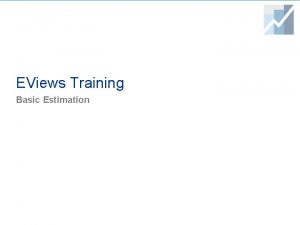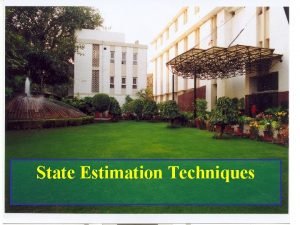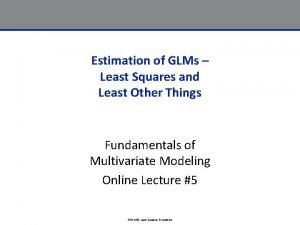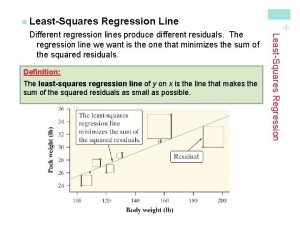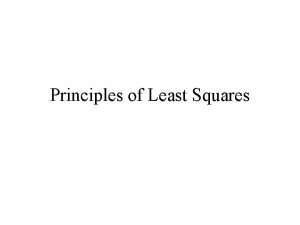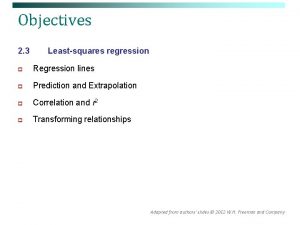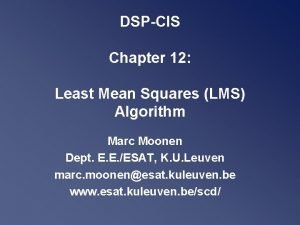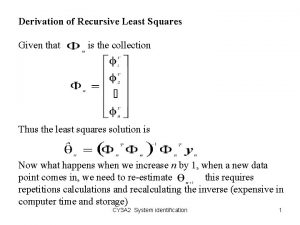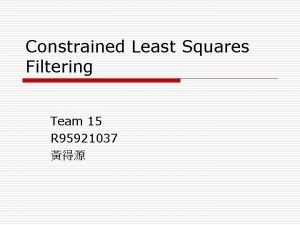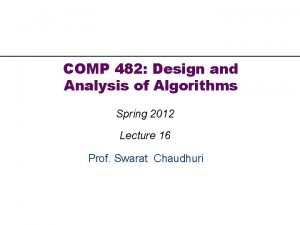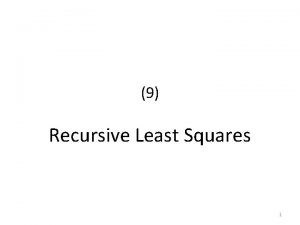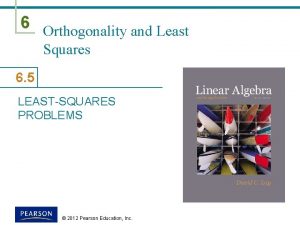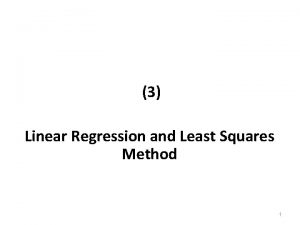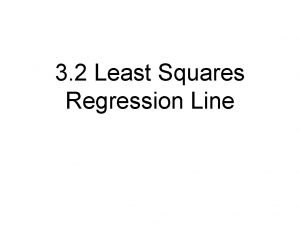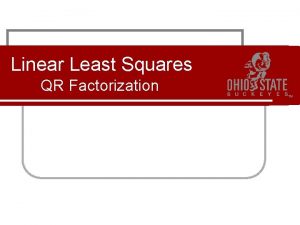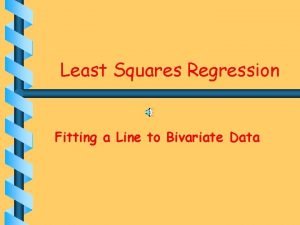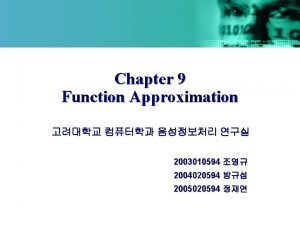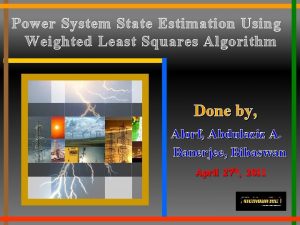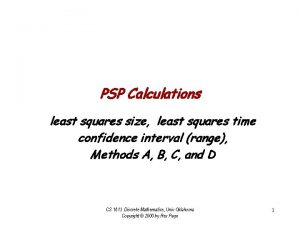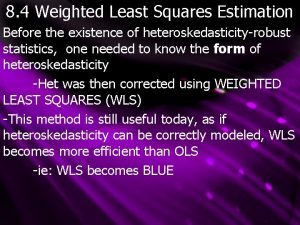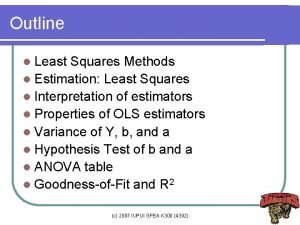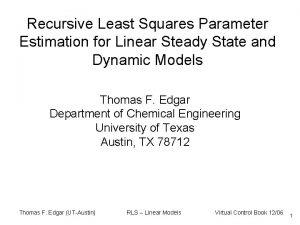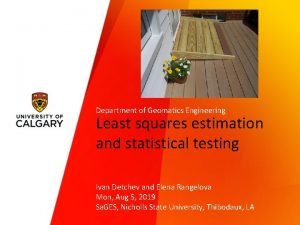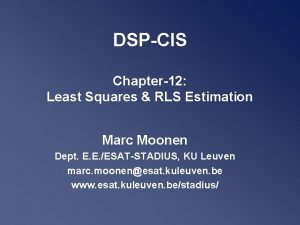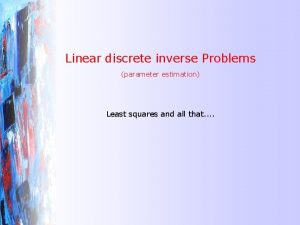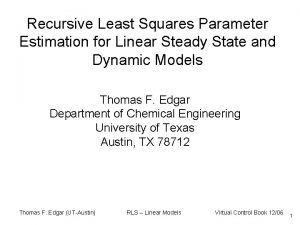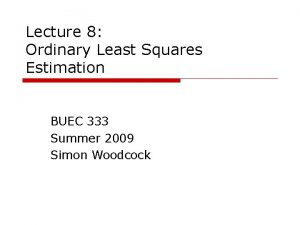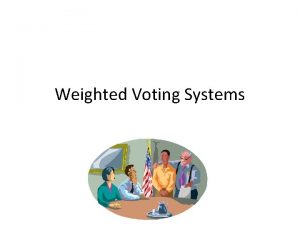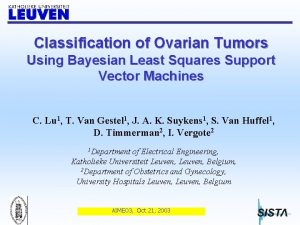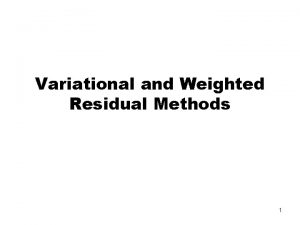Power System State Estimation Using Weighted Least Squares



















![Some Objective Method Results Conclusions Explanations References [1] Power Generation Operation and Control, Allen Some Objective Method Results Conclusions Explanations References [1] Power Generation Operation and Control, Allen](https://slidetodoc.com/presentation_image_h2/043dc9bcf5dba4d4ab32481e61e0985a/image-20.jpg)

- Slides: 21

Power System State Estimation Using Weighted Least Squares Algorithm Done by, Alorf, Abdulaziz A. Banerjee, Bibaswan April 27 th, 2011

Least squares method application has started during that time. 1801 1960 State Estimation History

1801 Got incorporated in electric power systems when Prof. Schweppe and Prof. Handschin first published their paper on the topic. 1960 State Estimation History

The Main Idea of the Work

The Outlines of the Work 1) Some Explanations. 2) Objective. 3) Method Used for State Estimation. - WLS (Weighted Least Squares). 4) Results. - IEEE 14 Bus System. 5) Conclusions. 6) References.

Some Explanations Objective Method Results Conclusions References q State variables are the voltage of the buses and relative phase angles at the respective nodes/buses. q Idea is to estimate (calculate) these values at each and every bus. q Input to the state estimator is measured data from available measuring devices located in different parts of the system. q The input data is processed by an algorithm in the control centers to estimate (calculate) the values of the state vectors.

Some Explanations Objective Method Results Conclusions References The objective is to estimate/calculate the values of the system state as follows: Where, is the estimated state vector of dimension m. is the estimated measurement i. is the measure value of the measurement i. is the variance in the error in the measurement i.

Some Objective Explanations Method Results Conclusions References WLS Algorithm The measurement function is formed with help of measured data (line power flows, bus power injections, bus voltage magnitudes, and line current flow). End Form a Jacobian matrix by taking the partial derivative of the measurement function with respect to the state vector. The gain matrix is formulated with Jacobian and error covariance matrix Finally the solution is obtained from the gain matrix

Some Objective Explanations Method Results Conclusions References WLS Algorithm (Cont. ) Initialize the state vector typically, as a flat start. update and go to step 3. Else, Stop! Calculate the gain matrix, Calculate Test for convergence, max < ε? Decompose Solve for and

Some Objective Method Explanations Results Conclusions References

Some Objective Method Explanations Results Conclusions References Measurement table for IEEE 14 bus system: Sr. No Measurement type Value (p. u) From bus To bus 1 2 3 4 5 6 7 8 9 10 11 12 13 14 15 1 2 2 2 2 3 3 3 1. 06 0. 1830 -0. 9420 0. 00 -0. 0900 -0. 0350 -0. 0610 -0. 1490/ 0. 3523 0. 0876 0. 0000 0. 2103 -0. 0580 -0. 0180 1 2 3 7 8 10 11 12 14 2 3 7 8 10 11 0 0 0 0 9 e-4 1 e-4 1 e-4 1 e-4 1 e-4

Some Objective Method Explanations Results Conclusions References 16 3 -0. 0160 12 0 1 e-4 17 3 -0. 0500 14 0 1 e-4 18 4 1. 5708 1 2 64 e-6 19 4 0. 7340 2 3 64 e-6 20 4 -0. 5427 4 2 64 e-6 21 4 0. 2707 4 7 64 e-6 22 4 0. 1546 4 9 64 e-6 23 4 -0. 4081 5 2 64 e-6 24 4 0. 6006 5 4 64 e-6 25 4 0. 4589 5 6 64 e-6 26 4 0. 1834 6 13 64 e-6 27 4 0. 2707 7 9 64 e-6 28 4 -0. 0816 11 6 64 e-6 29 4 0. 0188 12 13 64 e-6 30 4 0. 05634 13 14 64 e-6 31 5 -0. 1748 1 2 64 e-6 32 5 0. 0594 2 3 64 e-6

Some Objective Method Explanations Results Conclusions References Result table for IEEE 14 bus system for no missing data: Bus No. 1 2 3 4 5 6 7 8 9 10 11 12 13 14 Voltage (p. u) 1. 0084 0. 9916 0. 9535 0. 9596 0. 9631 1. 0184 0. 9945 1. 0313 0. 9793 0. 9780 0. 9939 1. 0004 0. 9932 0. 9689 Bus Angles θ (deg) 0 -5. 5085 -14. 1561 -11. 3767 -9. 7254 -16. 0092 -14. 7122 -14. 7130 -16. 4687 -16. 6975 -16. 4770 -16. 9482 -16. 9807 -17. 8608

Some Objective Method Explanations Results Conclusions References Result table for IEEE 14 bus system when a bus data is missing: Bus No. 1 2 3 4 5 6 7 8 9 10 11 12 13 Voltage (p. u) 1. 0068 0. 9899 0. 9518 0. 9579 0. 9615 1. 0185 0. 9919 1. 0287 0. 9763 0. 9758 0. 9932 1. 0009 0. 9940 Bus Angles θ (deg) 0. 0000 -5. 5265 -14. 2039 -11. 4146 -9. 7583 -16. 0798 -14. 7510 -14. 7500 -16. 5125 -16. 7476 -16. 5397 -17. 0203 -17. 0583

Some Objective Method Explanations Results Conclusions References Result table for IEEE 14 bus system when some random line data is missing: Bus No. 1 2 3 4 5 6 7 8 9 10 11 12 13 14 Voltage (p. u) 1. 0308 1. 0141 0. 9736 0. 9829 0. 9865 1. 0408 1. 0138 1. 0492 0. 9975 0. 9978 1. 0220 1. 0238 1. 0172 1. 0068 Bus Angles θ (deg) 0. 0000 -5. 2644 -10. 8803 -9. 3051 -11. 1377 -14. 0619 -14. 0608 -15. 7489 -14. 7092 -11. 6952 -12. 0232 -12. 0531 -12. 7111

Some Objective Method Explanations Results Conclusions References

Some Objective Method Explanations Results Conclusions References

Some Objective Method Results Explanations Conclusions References 1) The S. E. problem can be solved by WLS method with a good amount of accuracy. 2) However, the presence of any bad measurement cannot be identified in this algorithm. 3) When the measurements pertaining to one particular bus is missing the WLS algorithm reconstructs the system and give the estimates for the remaining buses.

Some Objective Method Results Explanations Conclusions References 4) When some random measurements are missing, they are not considered, keeping in mind that the system matrix does not become singular, and the WLS algorithm reconstructs the system and forms the estimates. These estimates when compared to the reference case (when all data are present), do not however give very good estimates as we are relying on lesser number of measured data for the estimates and this is bound to have some amount of error incorporated in it.
![Some Objective Method Results Conclusions Explanations References 1 Power Generation Operation and Control Allen Some Objective Method Results Conclusions Explanations References [1] Power Generation Operation and Control, Allen](https://slidetodoc.com/presentation_image_h2/043dc9bcf5dba4d4ab32481e61e0985a/image-20.jpg)
Some Objective Method Results Conclusions Explanations References [1] Power Generation Operation and Control, Allen J. Wood, Bruce F. Wollenberg, Wiley and Sons, 1984. [2] Power System State Estimation, Theory and Implementation, Ali Abur, Antonio Go`mez Expo`sito, Marcel Dekker, Inc. , 2004. [3] M. E. El-Harway, Editor, ‘Bad Data Detection of Unequal Magnitudes in State Estimation of Power systems’, Power Engineering Letters, IEEE Power Engineering Review, April 2002. [4] Robert E. Larson, Member IEEE, William F. Tinney, Senior Member, IEEE, Laszlo P. Hajdu, Senior Member, IEEE, and Dean S. Piercy, ‘State Estimation in Power Systems Part II: Implementation and Application’, IEEE Transactions on Power Apparatus and Systems, Vol. PAS-89, No. 3, March 1970, pp. 353 – 363. [5] Calculations and Programs for Power System Networks, Y. Wallach, Prentice Hall, Englewood Cliffs, New Jersey, 1986. [6] Fred C. Schweppe, Member, IEEE, and Edmund J. Handschin, Member, IEEE, ‘Static State Estimation in Electric Power Systems’, Proceedings of the IEEE, vol. 62, No. 7, July 1984, pp. 972 – 982. [7] http: //www. ee. washington. edu/research/pstca/pf 14/pg_tca 14 bus. htm

Any Question
 Weighted least squares eviews
Weighted least squares eviews State estimation in power system
State estimation in power system Weighted and non weighted codes
Weighted and non weighted codes Youcubed squares and more squares answers
Youcubed squares and more squares answers 4 squares = 5 9 squares =
4 squares = 5 9 squares = Epsy
Epsy Least squares regression line definition
Least squares regression line definition Least square method in surveying
Least square method in surveying Least squares regression line statcrunch
Least squares regression line statcrunch Mean ?
Mean ? Recursive least squares python
Recursive least squares python Constrained least square filtering
Constrained least square filtering 4d3d41669541f1bf19acde21e19e43d23ebbd23b
4d3d41669541f1bf19acde21e19e43d23ebbd23b Recursive least squares example
Recursive least squares example Least squares problem
Least squares problem Least squares model
Least squares model Least squares regression line
Least squares regression line Nonlinear regression lecture notes
Nonlinear regression lecture notes Geometry of least squares
Geometry of least squares Qr factorization least squares
Qr factorization least squares Bivariate least squares regression
Bivariate least squares regression Approximation de padé
Approximation de padé
